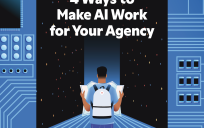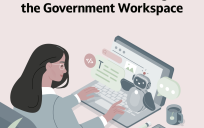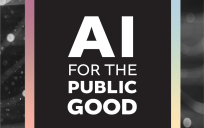In the best of circumstances, government contact centers are a demanding environment. Increasingly, constituents are looking to leverage multiple channels to interact with agencies, including voice, chat, email, text, social and self-service options.
And it’s not just that they want to use multiple channels – they also want to jump from one channel to another seamlessly. And they don’t want to be told that agents are available only between 9 a.m. and 5 p.m. on weekdays. They expect service when they need it.
All of this can be a nightmare for contact centers to manage. Many contact centers have different agents handling different channels. That sounds efficient, but think about someone contacting an agency by chat, then following up with a call. Will the agent answering the phone be aware of that original contact and what was said?
This environment proved even more challenging with the onset of the COVID-19 pandemic. Residents concerned about the virus’s effect on their health and employment reached out to local, state and federal agencies in record numbers, and those agencies had to respond, even as they themselves faced challenges with shifting from onsite to online work.
“Being able to deal with that spike was critical to provide relief to communities and citizens that you had it under control, and that you could provide the information in an appropriate manner,” said Davide Petramala, Director of Customer and Partner Onboarding at Avaya. “And that appropriate manner became the ability to not have to physically go in and find information.”
Some agencies had multiple entry points to their contact centers, including digital options, before the pandemic, but those tended to be siloed, so someone who can’t complete a transaction online would have to start over when they call a live agent.
Government contact centers need to move beyond the traditional processes to keep pace with modern customer expectations.
“What this [pandemic-driven] digital transformation forced was more consolidation: one intelligent conversation that the whole call center has access to, that delivers it at multiple touchpoints,” Petramala said.
Solution: Put Automation, AI to Work
What’s needed is a true omni-channel strategy that creates a seamless customer journey. Such a strategy will ensure that agents have full visibility into a customer’s situation and previous interactions. That means no more “siloed” contact centers – every agent should be able to manage interactions across all channels.
Automation is essential to making this feasible. Both the agent and the customer need tools that they can use to streamline that customer journey. For the agent, automation can handle a lot of mundane processes – such as collecting information from customers or even responding to simple inquiries – which frees up agents to focus on more complex problems.
From a constituent’s perspective, the less time they spend interacting with a contact center, the happier they are. Many people prefer to start with a self-service option, and deal with an agent only if it becomes necessary. And if it becomes necessary, they prefer to keep the interaction as quick and efficient as possible.
Increasingly, automation is being driven by AI and machine learning. AI makes it possible to automate more complex constituent interactions, further alleviating an agent’s workload. AI also can assist agents as they interact with constituents – pulling up background information (e.g., previous interactions with a constituent), suggesting responses and recommending next steps.
“Think of it as like my own personal virtual assistant as an agent,” Petramala said. “Not only do I get the contextual information, but as the conversation’s going on, based on the topic that we’re discussing, it can feed relevant articles or content to me based on the data that it’s tapped into.”
Cloud is the only way to deal with these challenges quickly and cost-effectively because it provides scalable services that support automation and AI, he said. By going to the cloud, agencies can outsource work to experts in the field and subscribe and pay only for the services they use. “They could right-size their cost and scenario,” Petramala said.
This article is an excerpt from GovLoop’s recent report, “Clearer Connections: How to Build a More Intelligent Contact Center.” Download the full report here.






Leave a Reply
You must be logged in to post a comment.